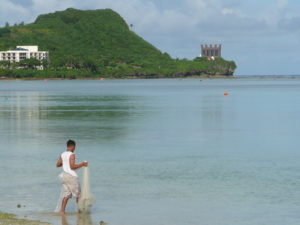Mitigating Global Indigenous Poverty for the Preservation of Cultures
 In a rapidly changing world where modernization and globalization constantly reshape societies, indigenous cultures face the dire challenge of preserving their unique traditions, languages and way of life. Deeply rooted in ancestral lands, these civilizations hold invaluable wisdom that enriches humanity’s heritage. Yet, these people are also among the most vulnerable populations. Recognizing the critical link between poverty alleviation and preserving indigenous cultures is imperative for building a more inclusive and sustainable future.
In a rapidly changing world where modernization and globalization constantly reshape societies, indigenous cultures face the dire challenge of preserving their unique traditions, languages and way of life. Deeply rooted in ancestral lands, these civilizations hold invaluable wisdom that enriches humanity’s heritage. Yet, these people are also among the most vulnerable populations. Recognizing the critical link between poverty alleviation and preserving indigenous cultures is imperative for building a more inclusive and sustainable future.
Indigenous People Experience Higher Levels of Poverty Everywhere
Across the globe, indigenous communities face disproportionately high levels of poverty. This unfortunate reality transcends geographical boundaries and affects indigenous populations in various regions. From the Americas to Africa, Asia to the Pacific Islands, indigenous poverty plagues marginalized groups with a substantial disadvantage regarding economic stability.
Several interconnected factors contribute to the increasing levels of indigenous poverty. Historical injustices, namely colonization and forced assimilation, have profound and long-lasting impacts on indigenous societies that disrupt traditional livelihoods and cultural practices, often leading to economic marginalization and loss of self-determination. Furthermore, indigenous people frequently encounter systematic barriers that hinder their economic advancement and only exacerbate poverty rates. These people reside in remote or geographically isolated areas, limiting their access to essential services and economic opportunities.
Indigenous People of Guam: CHamorus
Picture postcard beauty, tranquil seas and lush jungles — images of a bygone era in Guam. Deep within the Pacific Ocean lies the enchanting U.S. territory of Guam, an island where the vibrant culture and traditions of the CHamoru people have thrived for thousands of years, embodying the complex dynamics of globalization, colonial history and cultural resilience, all intersecting in a delicate balance. However, like many indigenous communities around the world, the CHamoru people face the pressing challenges of poverty and cultural erosion in the face of external influences.
The CHamoru are plagued with historical dispossession of their lands, resources and traditional territories, and this loss of control over their ancestral lands limits economic opportunities and control over resources, all the while economic availability is already limited in regions where indigenous communities reside. Simultaneously, cultural erosion and marginalization can occur when indigenous communities face socioeconomic challenges, further exacerbating indigenous poverty.
Poverty forces the prioritization of immediate survival needs over cultural practices and traditions, inevitably leading to the loss of cultural identity and weakened intergenerational transmission of knowledge. This profound social fabric of indigenous communities erodes the sense of identity and pride, and this loss of cultural capital contributes to social exclusion, reduced social cohesion and limited opportunities for community development and empowerment.
Addressing Indigenous Poverty
Addressing indigenous poverty for CHamorus requires a comprehensive and multi-faceted approach that takes into account the unique needs and challenges faced by the community. Here are some key initiatives that have seen success in assisting those affected by indigenous poverty in Guam.
CHamoru Land Trust Commission (CLTC)
The CLTC was established in Guam in 1975 by enacting the CHamoru Land Trust Act, which helped return lands to CHamoru families and communities. This government agency’s mission is to address indigenous poverty by providing land to qualified CHamoru applicants at an affordable cost, making land accessible for various purposes, including residential, agricultural and commercial use. By offering land at a significantly reduced cost compared to the open market, the CLTC empowers indigenous CHamoru families with the opportunity of land ownership. Moreover, by incorporating cultural preservation requirements into land leases, the CLTC has reinforced CHamoru’s identity and heritage, ensuring the continued vibrancy of the indigenous culture.
Policy Reform
The Land Rights Recognitions argues that government systems should prioritize recognizing and protecting indigenous land rights, ensuring secure land tenure and supporting sustainable management practices. In addition to land restitution and repatriation efforts, policy initiatives also have sought to promote economic opportunities and improvements in education and health care for indigenous CHamorus. Guam’s unique historical and geopolitical context as a U.S. territory shapes the policy landscape and the efforts to address indigenous poverty.
The Commission on Decolonization
The historical experience of colonization has had a profound impact on indigenous poverty, exacerbating disparities and limiting self-determination while silencing the political empowerment of the people of Guam. Decolonization represents a transformative shift, allowing for the formulation of policies and practices that directly address indigenous poverty and breaking the cycle that perpetuates economic and social inequalities. For indigenous people in Guam, decolonization stands as the linchpin in the broader effort to confront and rectify the deeply rooted challenges of poverty among Guam’s indigenous population.
–Aprile Kim
Photo: Flickr
